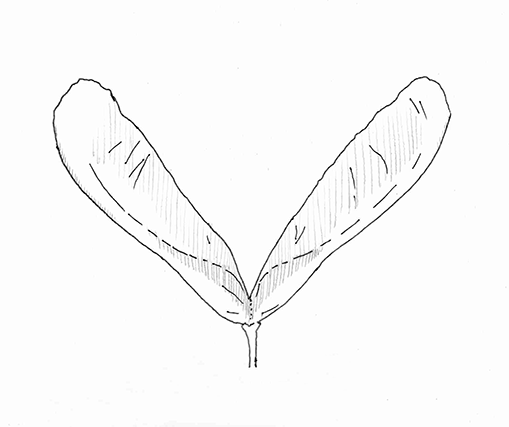Transpiration, Hamilton's Water Story
Museum of Steam & Technology
The City of Hamilton is located between two major bodies of water that are separated by the Niagara Escarpment, Lake Erie, and Lake Ontario. From an urban design perspective, the story of water plays a central role in the development of Hamilton, Ontario.
The natural forces that govern the Niagara Escarpment define the hydrological system in our city. In 1859, the Waterworks were built as a response to the cholera outbreak that was spreading across the world during the 19th century. The design used the gravitational forces of the Escarpment to deliver water to Hamiltonians. Hamilton's Waterworks sit at the basin of the Red Hill Creek, one of our region's primary natural corridors. As steam technology requires a supply of water to function, the location at the outflow of the Red Hill Creek was an advantageous one for the Waterworks as it provided clear access to water from Lake Ontario. Today, the City's numerous fountains, such as the Gore Park Fountain and Gage Park Fountain, celebrate this natural system and achievement of civic engineering.
Tropos’ research shows a strong correlation between old trees and Hamilton's surface level and underground streams. Trees are nature's engineering system. For thousands of years, ancient trees in our region have shaped our climate conditions and continue to influence the water cycle. Together, communities of trees participate in the circulatory nature of the planet to balance the atmosphere by regulating temperature across a wide geographic range.
Mature trees are good at this pumping process because they are big. Expansive root systems of surviving Monument Trees tap into undisturbed, pre-urbanized, soil conditions that are rich in nutrients, creating a larger climate impact on the wider region than smaller trees can. Like the pump in the Hamilton Museum of Steam & Technology, this tree technology turns a liquid (water) into a gas to power a dynamic system (the hydrological cycle that makes our planet run). This process is called transpiration.
Urban trees are key participants in this hydrological cycle because they absorb water in cities. Monumental Trees are especially important in regulating the flow of water in urban landscapes because their large, pre-settlement root systems absorb moisture from the ground and expire it into the air. In this way, urban trees help regulate the climate in our city. Trees in cities do this work for their whole community. As individuals, each Monument Tree plays an important role in the story of water.
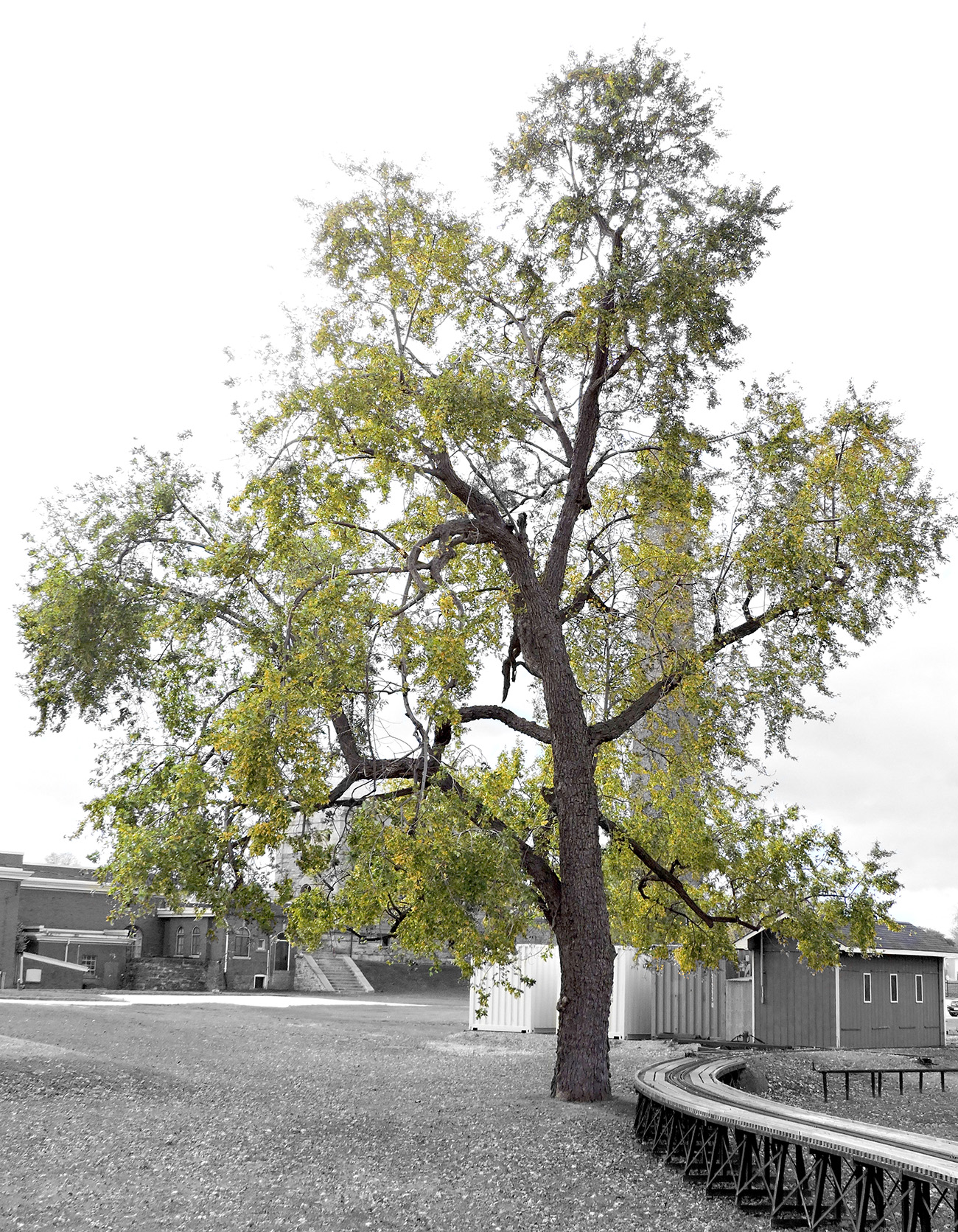
How Old?
The Silver Maple
Common Name: Silver Maple
Scientific Name: Acer saccharinum
Approximate Age: ~110 years
Measurements: 36 inches in diameter
The Monument Trees that grow near Hamilton's Waterworks are associated with the function of the Lake. Forming a natural connection with Confederation Park, the area is an ecological hot zone, rich with remnant wetlands, bogs, and former Oak-hick forests. Younger trees in this environment, such as Silver Maple, do not live as long as oak trees, typically reaching an age of 130 years. They are water loving and often found growing close to creeks, wetlands, or near a source of underground water. Their presence indicates and environment that is abundant with water, suggesting the Hamilton Museum of Steam & Technology may have a water supply under the ground. Within the neighbourhoods close to Hamilton Waterworks National Historic Site, many pre-settlement Bur Oaks can also be found.

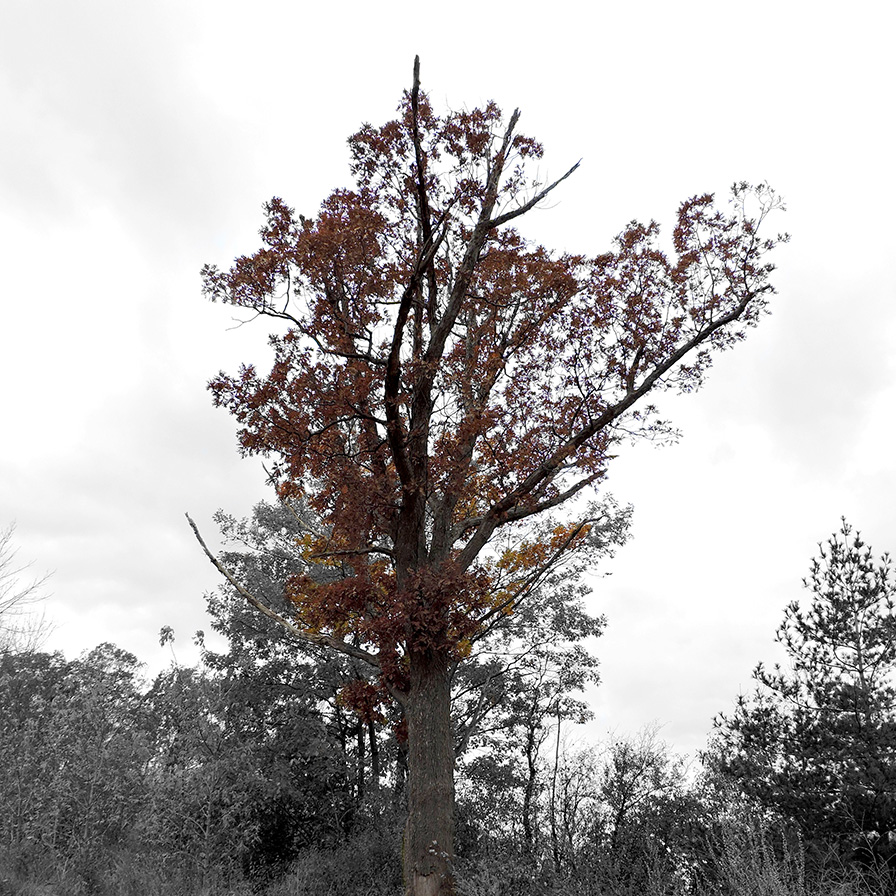
The Trail
The rise and fall of water in our region is governed by powerful forces of gravity that filter water through the lower city. Water draining from Lake Erie moves across the upper mountain, percolates through escarpment rock and travels through lower Hamilton before entering Lake Ontario. Today, a trail follows the former course of the Red Hill Creek and connects to a pedestrian bridge over the QEW highway.
Along this trail, one can find an old White Oak, growing among younger Oak trees. This landscape was once connected to the grounds of the Hamilton Museum of Steam & Technology through an expansive marsh that drained into Lake Ontario. Many White Oak, Bur Oak and Northern Red Oak trees grew along the creek in this environment. These trees represent later stage succession and indicate the forests has been growing for a longer period.
Urban deforestation has a particularly strong impact on Hamilton's urban heat island effect. Introducing new urban forests to green spaces, and removing concrete, is a key strategy that can strengthen our region’s resilience against a warming climate.
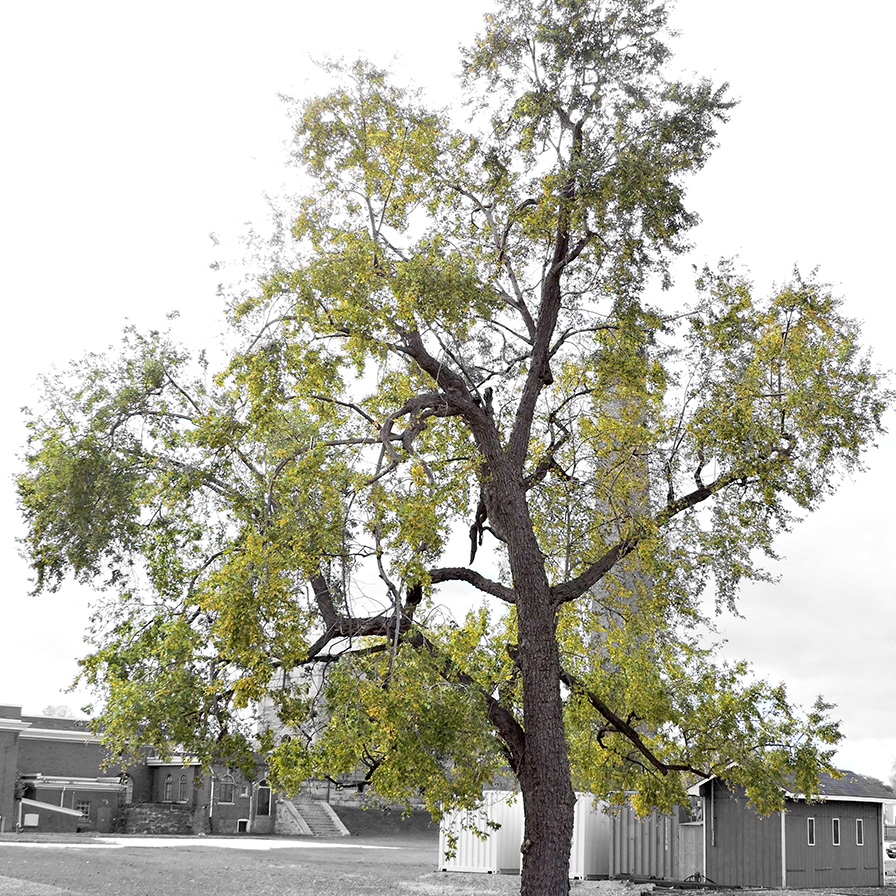
The Meadow
The environment around the museum was formerly made up of a mix of partially managed Oak savanna, wetlands and forest. Like Hamilton's Waterworks, old trees in this environment act as large pumps that deliver water between the upper and lower city. Today, two lone American Sycamore trees stand at the back of the Hamilton Museum of Steam & Technology. These native trees often grow in bottomland woodlands and floodplains. The long-lived American Sycamore is a mid-successional tree that can tolerate a high amount of periodic flooding. Their presence in the landscape suggests past disturbance, such as a flood event. They often live close to other Oak species, which are a later successional tree.
In healthy grassland environments, water is captured in the ground by sedges before traveling up internal columns of water-loving trees, such as American Sycamore. This water then evaporates through the pores or stomata of leaves. When trees expire water into the atmosphere, this process plays a role in balancing the climate in Hamilton (evapotranspiration). Restoring the landscape around the Hamilton Museum of Steam & Technology would strengthen these connections by assisting trees with absorbing water from the landscape.
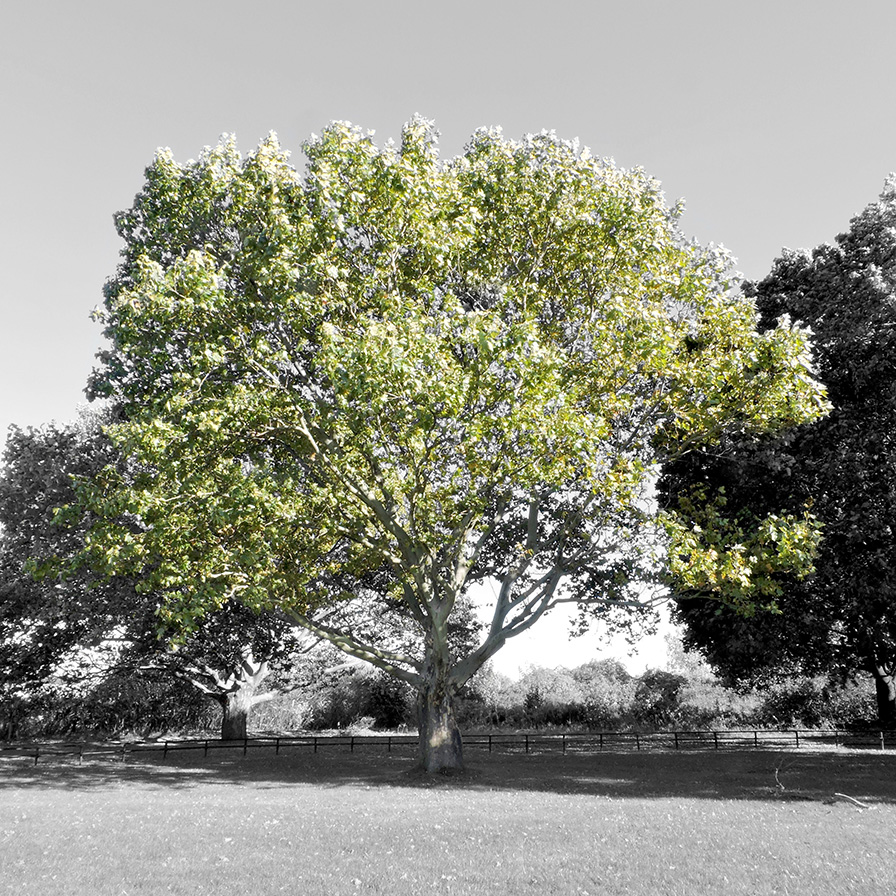
The Marsh
The Hamilton Museum of Steam & Technology is surrounded by a series of freshwater marshes that are fed by the Red Hill Creek. Although these wetlands have been fragmented by the QEW highway, and by the introduction of grass, they still receive water from the Niagara Escarpment. Wetlands act as filtration systems, cleaning water of silt and debris, before filtering this water toward the larger body of Lake Ontario. As part of these filtration systems, trees such as Silver Maple often appear alongside creeks and rivers. Silver maple trees like wet soil and often grow where they can tap into water under the ground. The Silver Maple growing on the grounds of the Hamilton Museum of Steam & Technology is not a very old tree, but its large size suggests it is connected to an ample water supply. Silver maple trees are important in riparian habitats, meaning places near the banks of a river, because they absorb downstream water and help to regulate flooding. Look at the form of the land around the Museum. Can you see that this landscape was once a marsh?
Museum of Steam & Technology Tree Species
- White Oak (Quercus macrocarpa)
- American Sycamore (Platanus occidentalis)
- Silver Maple (Acer saccharinum)
- Bur Oak (Quercus macrocarpa)
- Northern Red Oak (Quercus rubra)
- Shagbark Hickory (Carya Ovata)
A Pipeline to East Waterfront Trail - What If?
As urban areas expand and become more populous, creating green space for afforestation is increasingly important. From a natural systems perspective, open green space like the Hamilton Museum of Steam &Technology present opportunities for large-scale urban habitat restoration. These sites, when well designed, can be linked across large metropolitan areas, creating integrated networks of green corridors. These corridors form key wildlife habitats that allow plants and animals to move freely, but they can also act as pedestrian networks that make it possible for people to enjoy these landscapes and walk through the city.
Tropos’ research shows a strong opportunity to link the Pipeline Trail with the Museum and Confederation Park, providing pedestrian access from downtown to the East beachfront. By developing civic sites into naturalized urban parks, these areas can be transformed into new living landscapes, where people can experience the city in a new way.
Explore Monument Trees In Your Classroom
Learning Link: https://www.troposltd.com/learn
Learning Resource - Seed School
How do trees propagate? In the city it is easy to forget about the important role seeds play in the forest. Seeds are our quiet companions in the city. We rake them up, drop maple keys and watch them spin and pull them from cracks in the sidewalk when they become a nuisance.
Can we 'see' water moving up a tree? The uptake of water by a plant or, a seed, is called imbibition. This process occurs as dry seed material absorbs water from soil through osmosis. The absorption of water by a seed causes a tree seedling to begin to grow. For Silver Maple tree keys, germinative power can be lowered by varying periods of dryness in the soil.
